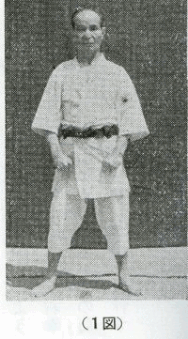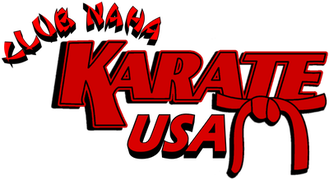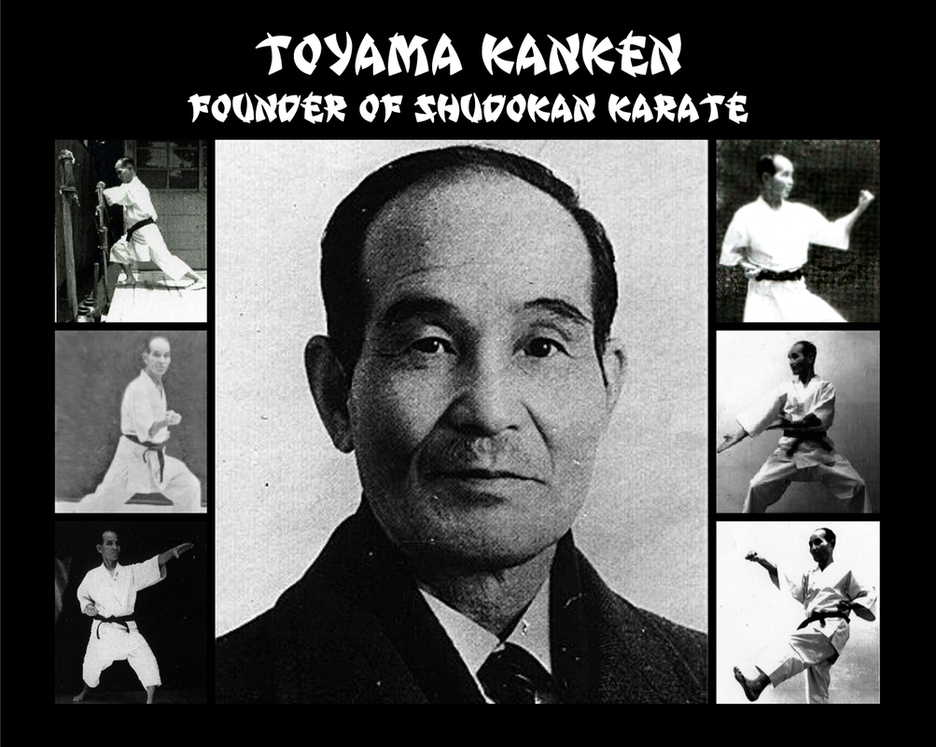
Shudokan Karate: A Comprehensive History and Description
History: Shudokan Karate, a martial art that holds deep roots in Okinawa, Japan, was founded by Toyama Kanken. Born into a noble family in Shuri, Okinawa, on September 24, 1888, Toyama Kanken began his karate journey at a remarkably young age, commencing his training under the esteemed Shuri-te instructor, Anko Itosu. He continued to study under Itosu's guidance until Itosu's passing in 1915. Toyama's dedication and passion for martial arts extended beyond Shuri-te, as he also received instruction from the notable Naha-te instructor, Kanryo Higaonna, and Ankichi Aragaki of Tomari-te, reflecting the rich diversity of his training.
In 1924, Toyama left Japan with his family, relocating to Taiwan. It was here that he began exploring different martial arts styles deeply rooted in China, including Ch'uan Fa (a form of Chinese Kempo) and various other practices reminiscent of Kung Fu. His proficiency and commitment to martial arts did not go unnoticed; Toyama was officially recognized by the Japanese government and granted the right to achieve any rank in any style of Okinawan karate. He was thus bestowed with the title of master instructor.
In 1930, Master Toyama inaugurated his first dojo in Tokyo, Japan, christening it "Shudokan," which translates to "the hall to study the way of karate." At this point, he did not claim to have created a new style of karate but instead imparted the knowledge he had acquired from his revered teachers, Itosu Sensei and Ch'uan Fa Kempo. His primary focus was on preserving and passing on the traditional Okinawan martial arts.
It wasn't until 1946 that Toyama founded the All Japan Karate-do Federation (AJKF), with the intention of unifying the diverse forms of karate practiced across Japan and Okinawa. Shudokan Karate, under his guidance, continued to evolve and establish its unique identity within the larger world of martial arts.
Description: Shudokan Karate is a dynamic martial art that combines the principles and techniques of Okinawan karate with elements inspired by Toyama's exposure to Chinese martial arts during his time in Taiwan. It is characterized by its emphasis on discipline, respect, and the pursuit of physical and mental excellence.
Key features of Shudokan Karate include:
Shudokan Karate has a rich and distinct heritage, rooted in the traditional practices of Okinawan karate, enriched by Toyama Kanken's experiences in China. It continues to be practiced and cherished by martial artists worldwide, offering a holistic approach to physical and mental development through disciplined training and unwavering commitment to the art.
History: Shudokan Karate, a martial art that holds deep roots in Okinawa, Japan, was founded by Toyama Kanken. Born into a noble family in Shuri, Okinawa, on September 24, 1888, Toyama Kanken began his karate journey at a remarkably young age, commencing his training under the esteemed Shuri-te instructor, Anko Itosu. He continued to study under Itosu's guidance until Itosu's passing in 1915. Toyama's dedication and passion for martial arts extended beyond Shuri-te, as he also received instruction from the notable Naha-te instructor, Kanryo Higaonna, and Ankichi Aragaki of Tomari-te, reflecting the rich diversity of his training.
In 1924, Toyama left Japan with his family, relocating to Taiwan. It was here that he began exploring different martial arts styles deeply rooted in China, including Ch'uan Fa (a form of Chinese Kempo) and various other practices reminiscent of Kung Fu. His proficiency and commitment to martial arts did not go unnoticed; Toyama was officially recognized by the Japanese government and granted the right to achieve any rank in any style of Okinawan karate. He was thus bestowed with the title of master instructor.
In 1930, Master Toyama inaugurated his first dojo in Tokyo, Japan, christening it "Shudokan," which translates to "the hall to study the way of karate." At this point, he did not claim to have created a new style of karate but instead imparted the knowledge he had acquired from his revered teachers, Itosu Sensei and Ch'uan Fa Kempo. His primary focus was on preserving and passing on the traditional Okinawan martial arts.
It wasn't until 1946 that Toyama founded the All Japan Karate-do Federation (AJKF), with the intention of unifying the diverse forms of karate practiced across Japan and Okinawa. Shudokan Karate, under his guidance, continued to evolve and establish its unique identity within the larger world of martial arts.
Description: Shudokan Karate is a dynamic martial art that combines the principles and techniques of Okinawan karate with elements inspired by Toyama's exposure to Chinese martial arts during his time in Taiwan. It is characterized by its emphasis on discipline, respect, and the pursuit of physical and mental excellence.
Key features of Shudokan Karate include:
- Katas: Shudokan practitioners engage in a diverse set of katas, which are choreographed sequences of movements that serve as a means of practicing and refining techniques. These katas are integral to the art and help students develop precision and fluidity in their movements.
- Striking Techniques: Shudokan Karate incorporates a wide range of striking techniques, including punches, kicks, knee strikes, and elbow strikes. These techniques are executed with precision and focus on developing power and accuracy.
- Self-Defense: Shudokan places a strong emphasis on practical self-defense techniques, enabling practitioners to protect themselves in real-world situations. This includes blocks, parries, and counterattacks.
- Sparring: As with many martial arts, sparring plays a significant role in Shudokan Karate training. It allows students to apply their techniques in a controlled and safe environment, promoting adaptability and practicality.
- Philosophy: Shudokan Karate incorporates a philosophy of self-improvement, respect, and discipline. It's not just about physical prowess but also about mental and spiritual growth.
Shudokan Karate has a rich and distinct heritage, rooted in the traditional practices of Okinawan karate, enriched by Toyama Kanken's experiences in China. It continues to be practiced and cherished by martial artists worldwide, offering a holistic approach to physical and mental development through disciplined training and unwavering commitment to the art.


